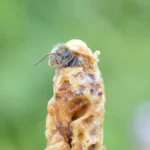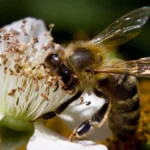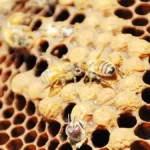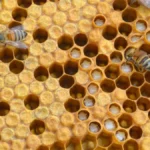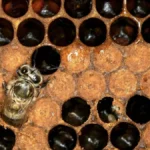In this article, we look at how to raise honey bee queens. Queen rearing is a fun part of beekeeping. Rearing a few queens for your own operation is very different from rearing queens for profit. We will take a look at how best to raise queens for profit.
How To Raise Queen Bees
If we look at the natural cycle in a beehive bees raise queens to allow for swarming and hive renewal. In the event of the queen being killed by mistake, they also raise emergency queen cells. Queen cells progress through a number of stages until a queen emerges.
If we work with the natural systems in a hive and use our understanding of technology, we can produce a lot more queens than a hive would produce naturally. In this article, we will look at some of these technologies and how you can use them to gain experience and market some queen cells.
My Personal Experience
I must state at the outset that I have only ever reared queens for research work. We reared queens for both open mating and artificial insemination and this was a very fiddly process. The open-mated queens were excellent. The artificially inseminated queens were somewhat less impressive.
Based on my personal experience, I can confirm that queen rearing is a very fiddly, time-intensive process. A healthy queen is a key to a healthy hive – if you produce queens for sale, their quality needs to be of the highest level.
I would caution against attempting queen rearing for profit until you have had at least 5 years of experience producing queens which perform well in your own hives.
Local Genetics
If you were to produce queens that perform well in your local conditions, those queens will have a niche market as locally adapted queens. It appears that there is a market for locally adapted bees that have resistance to diseases common in an area.
Many starting beekeepers make side money performing bee removals. Bees that have managed to establish hives in nature and survive are an excellent genetic resource. If they can survive without human help, then they have resistance to the diseases.
Building up a few apiaries of locally adapted bees would be a useful first step towards rearing queens. This will allow you to develop a niche product.
Royal Jelly Production
A by-product of producing queens is that you will become relatively proficient at producing royal jelly. While you gain the skills needed to repeatedly produce queen bees of the highest quality, you can use extra queen cups to harvest royal jelly.
When the royal jelly is fresh from the hive, the value of this product in your local market is very high. People are aware and interested in including fresh royal jelly in medicines and home remedies. There are thousands of home “ointment and beauty cream” makers who will buy royal jelly.
Drone Production
A key to producing queens is to ensure that there is a very healthy drone population in your area. Drones are reared by bees. Many management strategies attempt to reduce drone production, as drones are seen to encourage varroa mite problems.
When a queen mates, she will mate with anything from 20-60 drones. She will fly to the drone congregation area and the drones smell her pheromones and start chasing her. A queen is able to put on a good turn of speed. She will attempt to tire the drones out by flying in front of them and will then mate with the strongest and fastest drones.
In other words, the more drones you have, the more you can select the best drones. If she mates with drones that are strong, these drones have good enzymes in their wing muscles. They will produce efficient worker bee offspring.
How To Encourage Drone Production
If you do not use complete foundation sheets, the bees can choose to build drone cells. Alternatively, you can buy drone foundation sheets. Drones as we have mentioned, are very sought after by varroa mites and the mites multiply rapidly in this brood. Managing varroa in your drone production hives is critically important.
How To Produce Queen Cells
I have fiddled with making my own queen cups and grafting cells – this was something that clearly takes years of practice to get right. There are now relatively inexpensive queen-laying cages that allow you to force a chosen queen to lay eggs that can then be moved to queen cups and reared out in a rearing hive.

A kit such as this, or this easily allows you to harvest eggs and produce cells for rearing. This video shows how to use these cages.

Queen Cells For Sale
If you are selling queens to friends and acquaintances in your area, you can sell queen cells which can be introduced into their hives. This is the easiest way to move your queens into other hives but is limited to about a 60-mile radius of where you produce the queens. Transporting queen cells long distances invites problems.
Producing Mated Queens
To produce mated queens on a large scale you will require small mating boxes. I have used boxes similar to these ones in the past and found they worked well. There is nothing more magical than sitting on a late spring or early summer day and watching young queens go out on their mating flights. You can actually see the “drone comments” that form as the clouds of drones chase the queen around until she has mated with her chosen ones.

I hope this article has helped provide a broad overview of some of the things you will have to look into to rear queens for profit. As mentioned, this is a complex fiddly process, and practice will make perfect. Producing queens for a niche local market appears to be a good business proposition if you are in an area with a large hobby beekeeping community. If your queens are good, your sales will be driven by word of mouth. If you enjoyed it, please share.
Read more about: How Much Does A Queen Bee Cost?
FAQs
1. What is the process of raising queen bees in a hive?
Raising queen bees involves utilizing the hive’s natural processes to create queen cells, which are then reared until a queen emerges. If the queen is lost or if swarming occurs, bees will naturally raise new queens from selected eggs. You can enhance this process with specific techniques and technologies to increase the number of queens produced.
2. How long does it take for a queen bee to emerge?
From the time an egg is laid in a queen cell, it takes about 16 days for a queen to emerge. This includes the stages of egg, larva, and pupa before the queen emerges as an adult.
3. What factors should be considered when raising queen bees for profit?
To raise queens for profit, it’s crucial to have significant experience—ideally, at least 5 years. Ensure high-quality production by maintaining healthy hives and using best practices. Understanding local genetics and adapting to specific conditions can also create a niche market for your queens.
4. How important are local genetics in queen bee production?
Local genetics are vital for producing queens that are well-adapted to local conditions. Queens from locally adapted bees are more likely to perform well and have natural resistance to diseases common in the area. This creates a valuable market for queens suited to specific environments.
5. What is royal jelly, and how is it related to queen bee rearing?
Royal jelly is a nutrient-rich secretion produced by worker bees and is essential for developing queen bees. During queen rearing, surplus royal jelly can be harvested and sold as it is highly valued for its uses in medicine and beauty products. Every bee is fed Royal Jelly, but only the queen bee is fed exclusively on Royal Jelly!
6. How can I encourage drone production in my apiary?
Encouraging drone production can be done by using foundation sheets designed for drone cells or allowing bees to build drone comb naturally. Maintaining a healthy drone population is crucial as drones play a key role in mating with the queen.
7. What are queen cells and how are they produced?
Queen cells are specialized brood cells where queens are reared. You can produce queen cells by using queen-laying cages to force a chosen queen to lay eggs that are then transferred to queen cups for rearing. This process requires practice and attention to detail.
8. What is the difference between open-mated and artificially inseminated queens?
Open-mated queens mate naturally with drones from the environment, often resulting in high-quality queens adapted to local conditions. Artifically inseminated queens are bred using controlled mating techniques, which can be more complex and less predictable in performance.
9. How can I sell queen cells or mated queens?
Queen cells can be sold locally to beekeepers within a 60-mile radius, while mated queens are best sold using small mating boxes. This local approach helps avoid problems associated with long-distance transport.
10. What are the common challenges in queen rearing?
Common challenges include maintaining a healthy drone population, managing varroa mites, and ensuring consistent queen quality. Queen rearing is a time-intensive process that requires attention to detail and experience to master.

Dr. Garth A. Cambray is a Canadian/South African entrepreneur and beekeeper with 28 years of experience in apiculture and specializes in adding value to honey. His Ph.D. research developed a new advanced continuous fermentation method for making mead that has resulted in a number of companies globally being able to access markets for mead. His company, Makana Meadery, exports honey mead to the USA where it is available to discerning connoisseurs. He has also developed technologies to commercially manufacture organic honey vinegar in Zambia for export globally. He holds a few patents globally in the ethanol industry and believes in technology and knowledge transfer for human development and environmental sustainability. One of his proudest achievements is the fact that the wind farm he started at one of his old apiary sites has essentially made his hometown carbon neutral.

